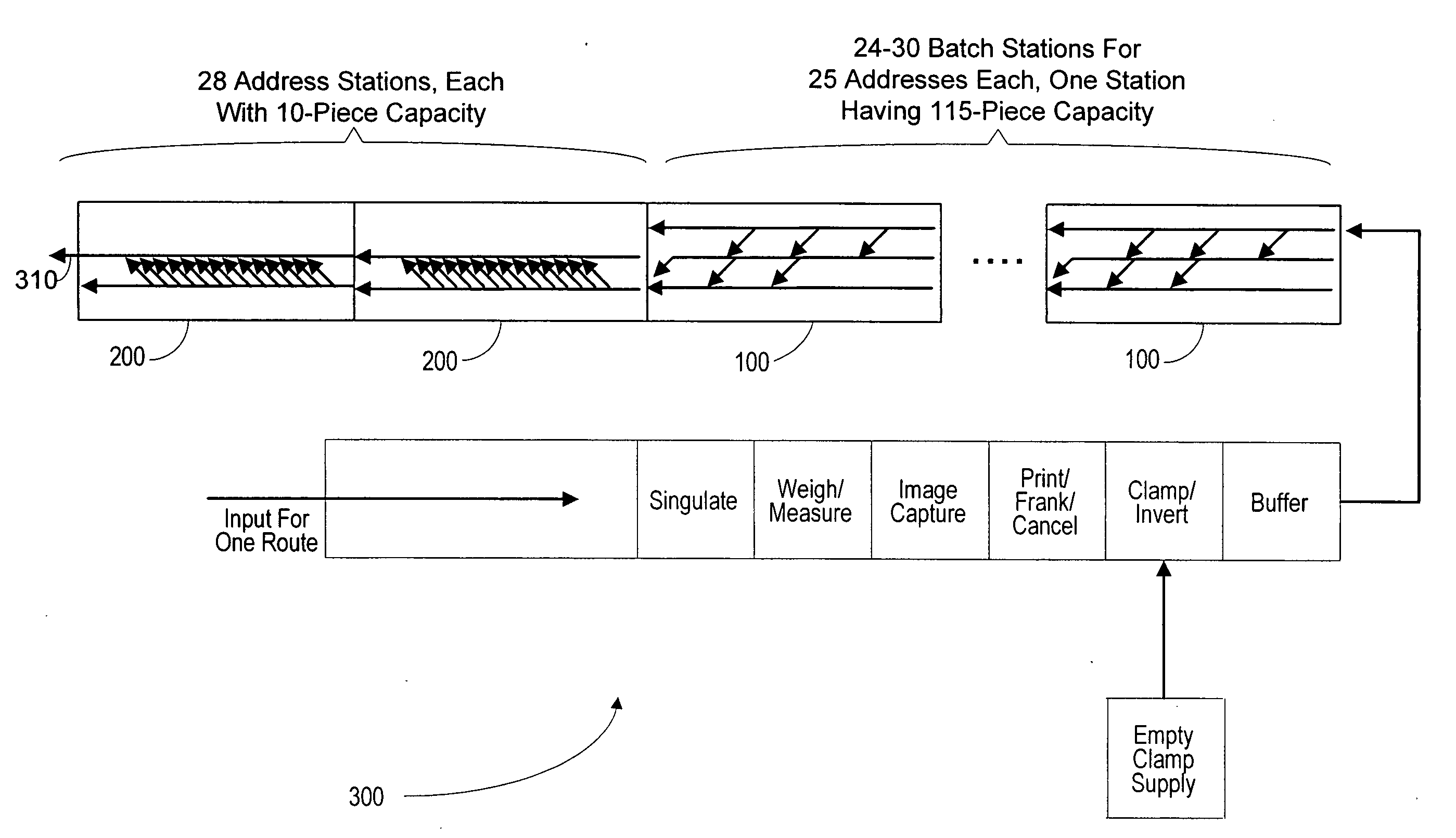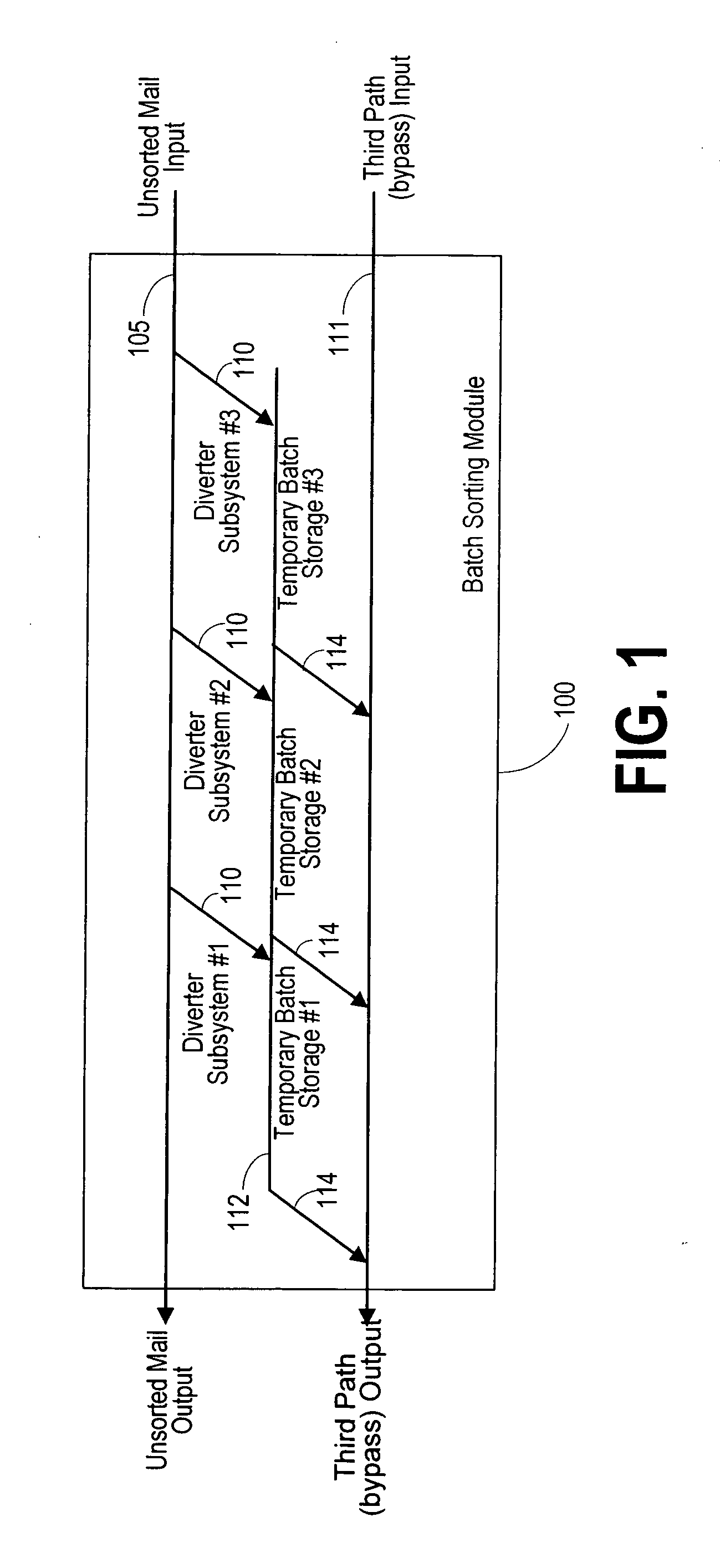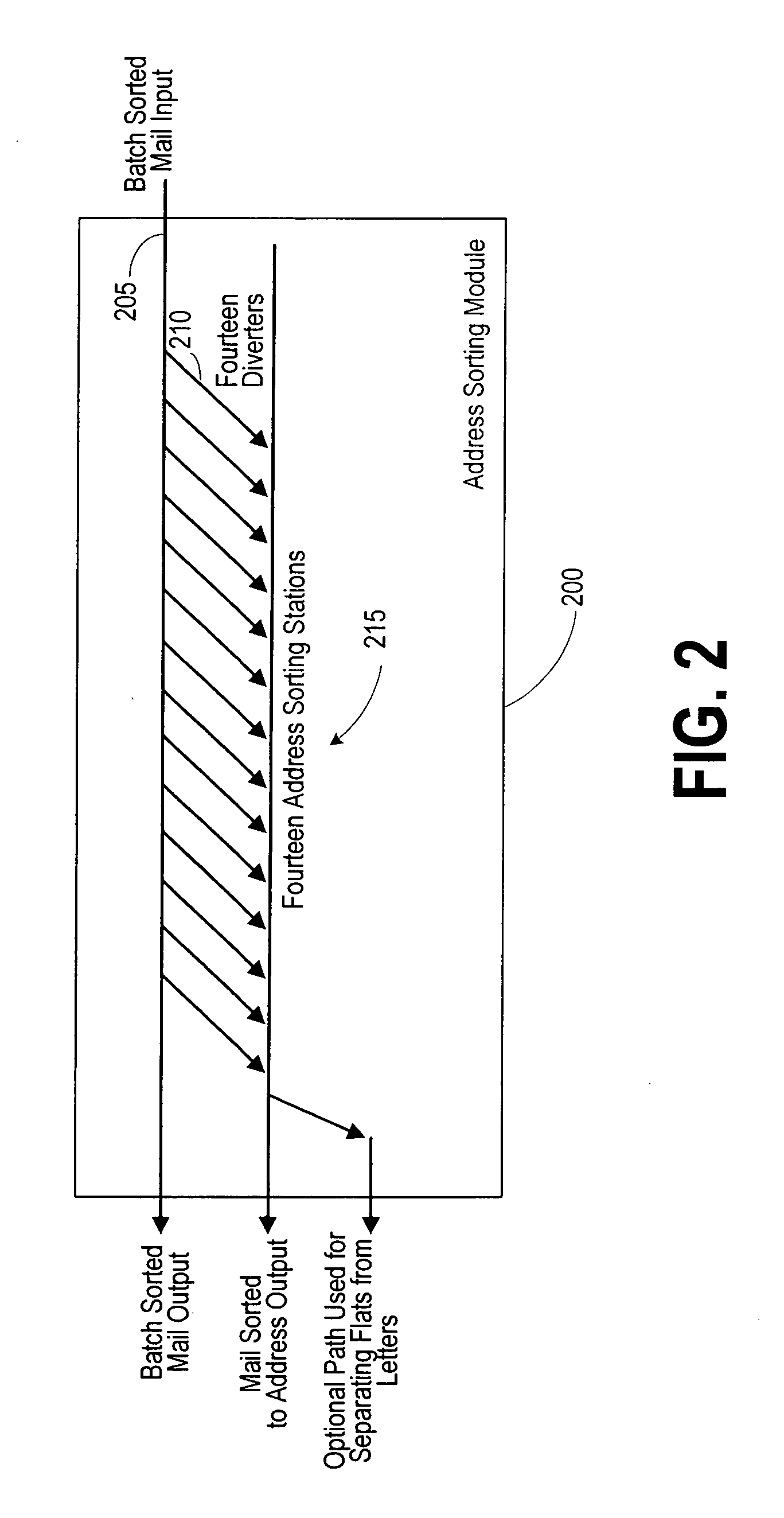Mail sorter, method, and software product for a two-step and one-pass sorting algorithm
a sorter and algorithm technology, applied in sorting, instruments, computing, etc., can solve the problems of significant space occupation, inefficient mail delivery process (last mile), and limited space for sorters available on the market today, so as to reduce the total path length through the sorter and reduce job time
- Summary
- Abstract
- Description
- Claims
- Application Information
AI Technical Summary
Benefits of technology
Problems solved by technology
Method used
Image
Examples
Embodiment Construction
[0036]An embodiment of the present invention will now be described, and it is to be understood that this description is for purposes of illustration only, and is not meant to limit the scope of the claimed invention. According to this embodiment of a mail sorting system, each mail piece is singulated, scanned, then captured by a clamp. The information read during the scanning operation (which may include addresses, barcodes, mail piece weight and dimensions, and other information) is associated in a database with a unique identifier on the clamp holding the mail piece. From that point on, all mechanical operations act on the clamp, and the mail piece is not touched by either the operator or the sorter equipment. Because all the clamps are substantially identical in shape and composition, they can be manipulated by the machinery with a high degree of reliability. The present system is capable of handling the entire diversity of the shapes, sizes and weights of mail stream with a cons...
PUM
 Login to View More
Login to View More Abstract
Description
Claims
Application Information
 Login to View More
Login to View More - R&D
- Intellectual Property
- Life Sciences
- Materials
- Tech Scout
- Unparalleled Data Quality
- Higher Quality Content
- 60% Fewer Hallucinations
Browse by: Latest US Patents, China's latest patents, Technical Efficacy Thesaurus, Application Domain, Technology Topic, Popular Technical Reports.
© 2025 PatSnap. All rights reserved.Legal|Privacy policy|Modern Slavery Act Transparency Statement|Sitemap|About US| Contact US: help@patsnap.com



